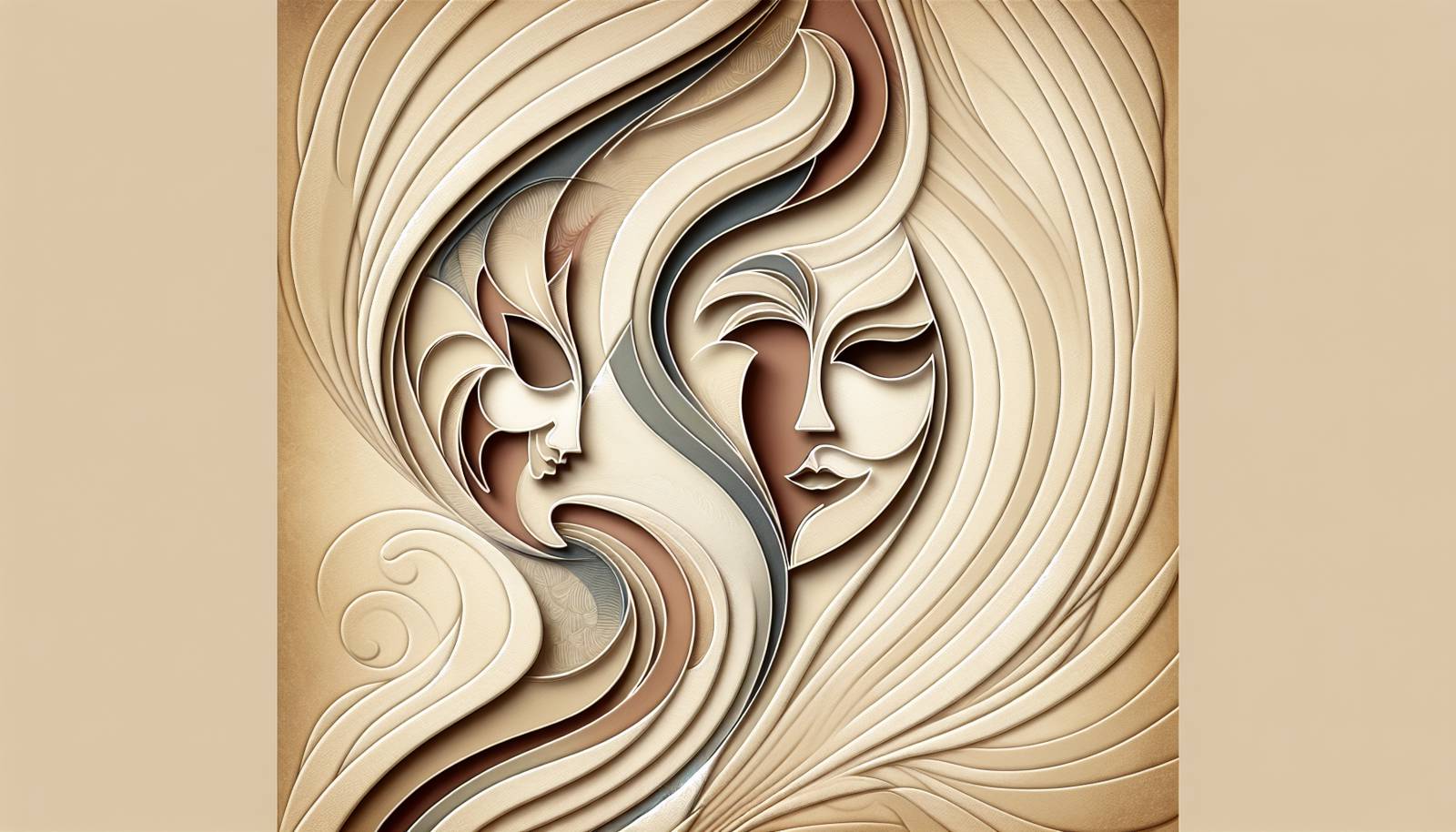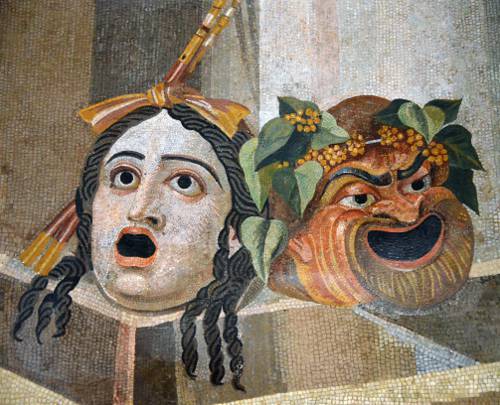
FAQ About The Cultural Influence of Theater Masks

What is the historical significance of theater masks?
Theater masks have been used for thousands of years in performance art to represent characters, convey emotions, and tell stories. Historically, they were prominent in Ancient Greek theater, where they helped actors play multiple roles and exaggerated facial expressions to reach large audiences. Masks have also been significant in other cultures, such as in Japanese Noh theater and Italian Commedia dell'arte, serving various symbolic and practical purposes.

How do theater masks influence identity in performances?
Theater masks allow performers to transcend personal identity and embody different characters or entities. They serve as a tool for actors to detach from their own persona and fully immerse themselves in the character they are portraying. This anonymity allows for more exaggerated and imaginative performances, as it provides a shield behind which actors can explore identity, personality, and emotions extensively.

What are some contemporary uses of theater masks?
Contemporary uses of theater masks can be seen in modern theater productions and performance art. In recent times, they have been employed to explore themes of identity, anonymity, and transformation. Techniques from traditional masked performances are also integrated into educational and therapeutic settings, where masks are used to help individuals explore their emotions and self-expression.

What role do masks play in cultural expression within societies?
Masks have played an integral role in cultural rituals, ceremonies, and performances across various societies, often symbolizing deities, spirits, ancestors, and social roles. They provide insight into cultural heritage, beliefs, and traditions and are often used to convey social and political messages. In some cultures, masks are employed in festivals and celebrations to unite communities and pass down traditions through storytelling.

What types of theater masks are used in Japanese Noh theater?
Japanese Noh theater utilizes a set of traditional masks, each representing distinct characters such as gods, spirits, women, and demons. These masks are meticulously crafted and painted to convey subtle expressions. Some common types include the 'otoko' mask (for male characters), the 'onna-men' (for female characters), and various 'shinja' (representing supernatural beings or deities).

How do Italian Commedia dell'arte masks differ from other theater masks?
Commedia dell'arte, a form of Italian theater, uses masks to represent stereotypical characters and social archetypes such as the servant, the master, and the lover. These masks are often half-masks, allowing for more vocal expression, unlike the full masks used in other cultures. They are characterized by exaggerated features that enhance the comedic and satirical elements of the performance.

Can you describe the use of masks in Ancient Greek theater?
In Ancient Greek theater, masks were a crucial part of the costume, allowing a small group of actors to play multiple roles by switching masks. Made from materials like wood, linen, and leather, these masks had exaggerated expressions to convey emotions clearly in large open-air theaters. They worked in tandem with the physical movements of actors to communicate character and plot to the audience.

What materials are traditionally used to make theater masks?
The materials used for theater masks vary widely across cultures and time periods. Traditional masks have been made from wood, leather, fabric, paper-mâché, and even metals. The choice of material depends on the intended use, desired durability, and cultural significance, as seen in the intricate craftsmanship of Noh masks or the more disposable paper-mâché of Commedia dell'arte masks.

How do masks enhance emotional expression in theater?
Masks enhance emotional expression by allowing actors to emphasize body language and gestures, often compensating for lack of facial flexibility. Since the audience can focus on the entire body and mask as a unified expression of emotion, it becomes necessary for performers to use exaggerated movements and posture, which enhances storytelling and emotive communication in theater.

What is the educational significance of theater masks?
Theater masks hold educational value in teaching acting, communication, and cultural appreciation. In drama education, masks are used to teach students about different cultures, history of theater, and character embodiment. They foster creativity, spontaneity, and improve non-verbal communication skills, helping students learn the art of storytelling and performance without relying solely on vocal expression.

How are masks used in theater for therapeutic purposes?
In therapeutic settings, theater masks are utilized as tools for exploring identity, emotions, and social relationships. Masks allow individuals to project and express parts of themselves that might be suppressed or hidden, offering a safe space for emotional exploration and healing. This approach is beneficial in drama therapy, helping people work through psychological issues and develop personal insights.

What is the significance of color and design in theater masks?
Color and design in theater masks are pivotal for expressing character traits, emotions, and social messages. Different colors often symbolize various attributes or emotions, such as red for passion or blue for tranquility. Designs may be elaborate or simple, depending on cultural significance and the role of the character, with specific styles recognizable within cultural traditions like African tribal masks or Southeast Asian dance masks.

Are there any notable differences between Eastern and Western theater masks?
Eastern and Western theater masks vary significantly in their design, use, and cultural context. Eastern masks, such as those in Japanese Noh or Chinese opera, often bear religious and ceremonial significance with intricate detailing, while Western masks, like those in Commedia dell'arte, have a more secular focus on entertainment with exaggerated, often humorous expressions. Each reflects distinct artistic traditions and social functions.

What role do masks play in modern experimental theater?
In modern experimental theater, masks are used to challenge traditional narratives and explore avant-garde concepts. Performance artists utilize masks to disrupt conventional storytelling, examine human relations, or make socio-political statements. By altering identities and perceptions, masks in experimental theater can provoke thought, evoke emotions, and challenge audiences to perceive performances in novel ways.

How do dance and music integrate with masks in theatrical performances?
Masks in theatrical performances often complement dance and music, creating a multifaceted art form that engages multiple senses. In operas, ballets, or traditional performances, masks help synchronize the visual elements with musical and dance expressions, enhancing the narrative and emotional impact of the performance. This integration can be seen in cultural events like Balinese dance or African mask dances, where rhythm, movement, and masks create a unified storytelling experience.

What are some challenges faced by actors using masks?
Actors face several challenges while performing with masks, including limited facial expressions, visibility, and ventilation. Masks require actors to overemphasize body language and vocal intonation, demanding greater physicality and awareness of spatial dynamics. Additionally, masks can be physically uncomfortable or restrictive, requiring actors to adapt their movements and performance style to communicate effectively through the mask.

How do masks contribute to storytelling in theater?
Masks contribute to storytelling by emphasizing visual and physical expression, which can transcend language and cultural barriers. They can symbolize abstract concepts, highlight character archetypes, and establish thematic elements. Masks enable a form of storytelling that is universal, allowing audiences to engage through visual symbolism and physical gestures, often leading to a deeper emotional connection with the narrative.

What are the symbolic meanings of masks in different cultures?
Masks hold diverse symbolic meanings across cultures, often representing spirits, ancestors, deities, or social roles. In African cultures, different masks symbolize protection, fertility, or initiation. In Japan, Noh masks can signify supernatural beings or profound emotions. Each culture imbues masks with meanings reflective of their beliefs, traditions, and historical narratives, making them rich symbols of cultural identity.

How have technological advancements impacted the creation of theater masks?
Technological advancements, such as 3D printing and new synthetic materials, have revolutionized theater mask creation, allowing for intricate designs and greater durability. Modern technology enables artists to create masks with detailed textures, lighter materials, and interactive elements that can respond to performance environments. These innovations expand the creative possibilities in theater production and mask design.

Are theater masks still relevant in today's digital age?
Despite the shift towards digital media, theater masks remain relevant as powerful tools for storytelling, emotional expression, and cultural preservation. They continue to be used in live performances, educational settings, and community events. The tangible nature of masks offers an experiential aspect that digital media cannot fully replicate, ensuring their enduring significance in performance arts.
